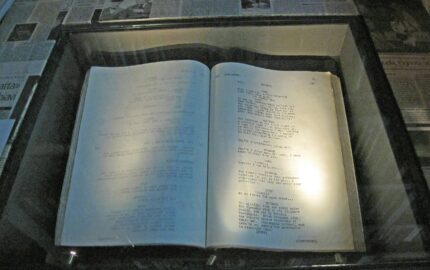Four long-time friends stopped for a lunch at an old-style diner in the rural ex-urbs of Philadelphia. We hadn’t all been together since before COVID and were fully absorbed with catching up. But we were barely seated before we were distracted by the collection of old cookie jars that perched on the porch, shelves, counters, cases and random spots wherever we looked. Fat pigs and fatter bakers. A black Scottie and bisque monkeys. A single apple and a mini-display of slot machines that seemed out of place. The balloon lady above.
We were soon back in time, debating what era they were from. We speculated on their value and talked about everything from the cookies jars we grew up with to what kind of cookies they held. When the rushed and unsmiling waitress brought our food, we dared asked about them. Rather than the scowl we half-expected, she lit up and did that wondrous thing: She started telling stories.
I don’t remember if she told us the origins of the collection. But we learned that the diner owners stopped hunting at flea markets and antique shops long ago; now customers just stop by to donate cookies jars found in attics and basements and closets. She told us about the night burglars broke in, smashing the glass door and and taking $87 from the till, but not touching the cookie jars. (At least one is estimated to be worth upwards of $5,000. She wouldn’t tell us which.)
And we heard the story of the cookie jars that have been banished. A regional TV station did a story on the diner once, and some viewers expressed outrage that some of the jars depicted racial stereotypes. We didn’t probe for specifics, but the subtexts were as clear as they were uncomfortable: values seen through the prisms of politics and race and power. It wasn’t hard for me to imagine that the shelves once held a bowing Asian cook grinning from beneath a conical straw hat, long known as a “coolie hat,” and others that were variations of the once-ubiquitous “mammy jar.”
I sensed some frustration from the waitress as we talked. Was she suggesting that things should be accepted as part of the context of their times — or simply that history shouldn’t be erased, no matter how painful? We only tiptoed along the edges of the conversation, so I can’t really know. Nor can I know what it’s like to be someone who sits in that same diner, looking at those same shelves, but without the images I took for granted as part of my childhood.
What I do know is that history not only shapes the stories we tell, but is shaped and reshaped by the telling of them. History not spoken of can be history forgotten, almost as if it never existed. History spoken of only by certain voices is seldom honest. And history that’s not revisited — often many times and through many prisms — keeps us stuck in the past without learning much from it.
The cookie jars were a reminder that there are still questions to ask and lessons to be learned from history — and that even the unlikeliest places offer up stories worth reporting.



